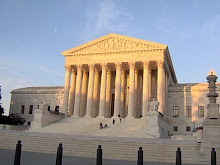
As a college journalist, I’ve spent the past two years writing extremely “localized” stories. With the exception of some city, state and federal political coverage, everything we publish must be relevant to students. With 20,000 students on a 295-acre campus, the University is like its own very large neighborhood. While the sight of a fire engine racing up the main street near my house is only mildly interesting, the sight on campus makes me stop what I’m doing to follow the truck and see what is going on.
After spending so much time looking for such narrow angles on my stories, the idea of “hyperlocal” reporting is intriguing. In the first class I took as a graduate student, we were assigned specific neighborhoods to explore; many of my classmates came up with really interesting stories simply by walking around areas such as the Trainsong or Whitaker neighborhoods.
In the article linked above, Donna Shaw talks about what happens when larger paper take on this idea. She quotes a man, who is working to develop this type of site for the Washington Post. This fascinates me, and I think a place like D.C. is the perfect example of where this type of reporting can get really interesting. ...
One of the things I loved about Washington, D.C., was the diversity between neighborhoods and the characters you ran into. I would love to find individuals in the different neighborhoods and learn about them.
I lived on Capitol Hill, across the street from the building Samuel Alito lived in during his Supreme Court confirmation hearings and just two blocks from the Capitol.  I was told that Barack Obama and John Ashcroft also lived in my neighborhood. About five blocks north of my apartment, a man named Peter Bis lives on a corner between a gas station and Union Station. At night, he moves down the block and campus out in front of a bagel shop. Peter is very friendly. He never asked me for money, but wished me a “Happy Monday” (or Tuesday, Wednesday, Thursday, etc.) every morning when I passed him on my way to work. He gave me a business card with the URL for a blog where he posts conspiracy theories about the government (A former D.C. intern has a great blog post about Peter ).
I was told that Barack Obama and John Ashcroft also lived in my neighborhood. About five blocks north of my apartment, a man named Peter Bis lives on a corner between a gas station and Union Station. At night, he moves down the block and campus out in front of a bagel shop. Peter is very friendly. He never asked me for money, but wished me a “Happy Monday” (or Tuesday, Wednesday, Thursday, etc.) every morning when I passed him on my way to work. He gave me a business card with the URL for a blog where he posts conspiracy theories about the government (A former D.C. intern has a great blog post about Peter ).
I would absolutely love to return to D.C. and sit down for some interviews with Peter. He is probably well-known to many people in D.C., but that is a man is truly IN a neighborhood. He sees everyone who passes through from Capitol Hill. He’s out there every day, on the street. He’s quite a fascinating character, and I considered him to be one of my neighbors. The experience of that neighborhood wouldn’t have been as rich without seeing a person like him everyday. I really do regret that I didn’t take the time to really sit down and talk to him.  What does it say that so close to the Capitol, there are people living on the street? The building I lived in was intern housing, but if I had to live in the District again, I’d want to live in the same area. When your neighbors include U.S. Senators and the occasional Supreme Court Justice, how do you interact and build relationships? .
What does it say that so close to the Capitol, there are people living on the street? The building I lived in was intern housing, but if I had to live in the District again, I’d want to live in the same area. When your neighbors include U.S. Senators and the occasional Supreme Court Justice, how do you interact and build relationships? .

No comments:
Post a Comment